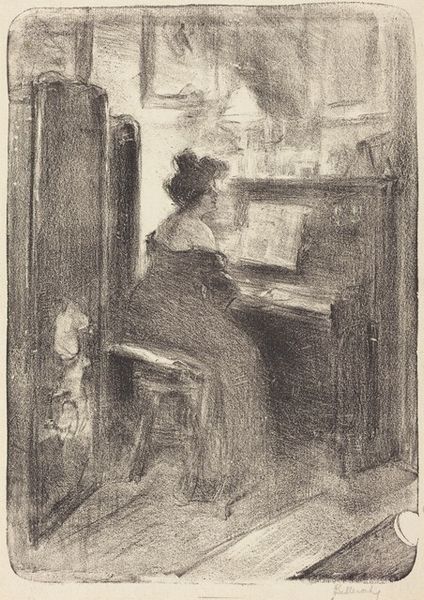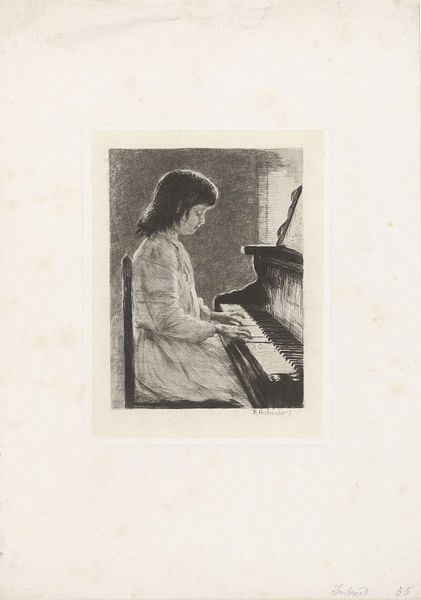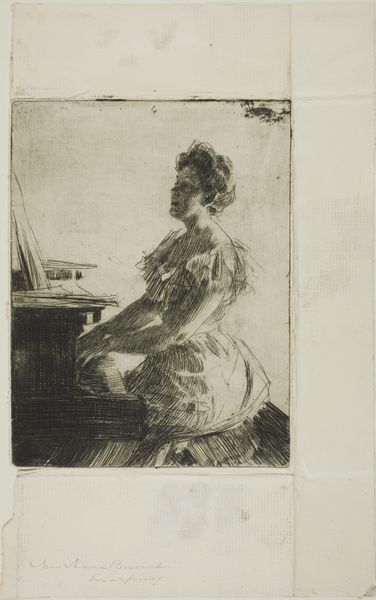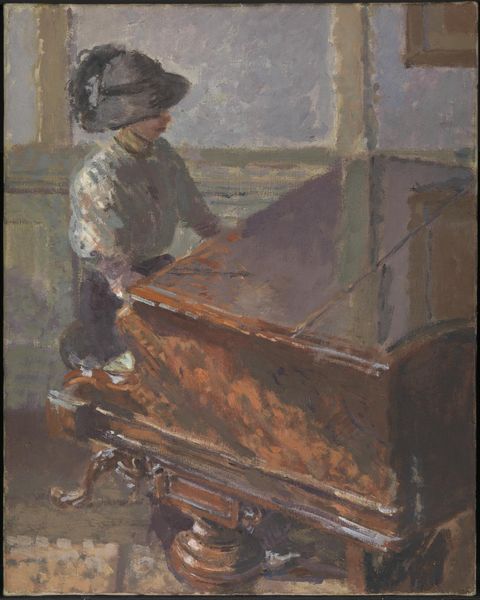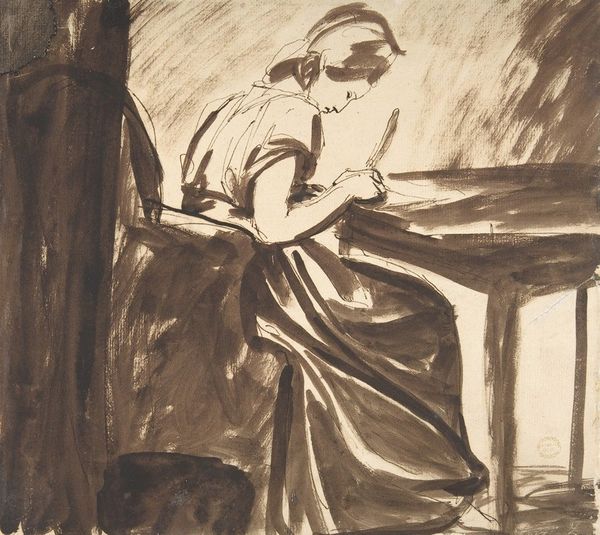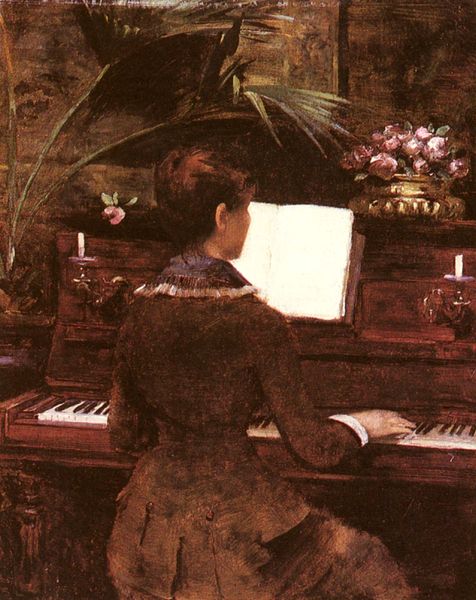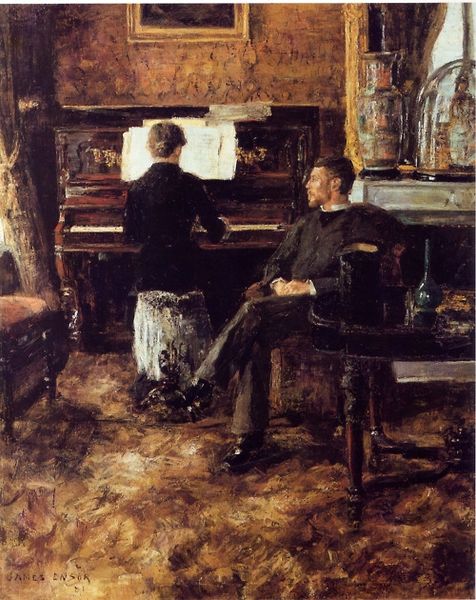
drawing, pencil
#
portrait
#
drawing
#
charcoal drawing
#
pencil drawing
#
pencil
#
portrait drawing
#
genre-painting
#
realism
Dimensions: height 411 mm, width 303 mm
Copyright: Rijks Museum: Open Domain
Editor: Here we have François Bonvin's "Woman at the Piano, Seen from the Back," created around 1860 using pencil and charcoal. It feels so intimate, like we're peering into a private moment. How do you interpret this work within its historical context? Curator: Considering its social context, this drawing gives us a glimpse into the cultural values of the time. The scene is domestic and middle-class. Playing the piano was a common accomplishment for women, signifying refinement and leisure. The "genre painting" aspect invites us to consider it less about *this* specific woman, but a type of woman who has access to music as a cultural symbol. The subdued tones emphasize the quietude of the domestic sphere, highlighting the woman's role within it. Does the fact she is facing away impact this in any way? Editor: Absolutely. It makes her feel distant, anonymous almost. Less an individual and more a representation. Like, this *is* what a woman should be. Curator: Precisely! And how do you see this being received when displayed? Images of women were loaded, carrying specific values about class, respectability, and femininity. An image like this is less about "art," and more about displaying this "woman at the piano" image into the broader cultural sphere, reinforcing existing social roles. In some ways, that domestic harmony is *on display*. Editor: That's so interesting. So it’s less a window into a real life, and more like a carefully staged…performance? Curator: A very controlled and widely broadcast image that spoke volumes about the place of women at the time, even in what seemed like a private moment. Editor: This makes me see it in such a different light! I now recognize how staged this 'intimate' scene is and question the artist’s, and society's, intentions.
Comments
No comments
Be the first to comment and join the conversation on the ultimate creative platform.
